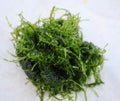How to Breed Nerite Snails: Problems and Benefits
Nerite snails are fascinating creatures that have become popular in the hobby of keeping aquariums because of how they look and how well they eat algae. Even though these snails are common in nature, they can be hard to breed in a home tank. In this article, we'll talk about the pros and cons of breeding Nerite Snails. We'll also talk about the differences between sexual and asexual reproduction, the conditions and requirements for successful breeding, how Nerite Snail eggs hatch and grow, and how to deal with issues related to population control and breeding.
Challenges and Things to Think About
Breeding Nerite Snails at home can be hard for a number of reasons. First of all, Nerite Snails need salty water for their eggs to grow and finish their life cycle. This means that it can be hard for them to have babies in freshwater tanks. Second, Nerite Snails have different male and female snails, which means that both are needed for breeding. Especially when snails are young, it can be hard to tell if they are male or female. Lastly, Nerite Snails may not always be able to breed, even when the right conditions are there. This is because they have evolved to reproduce using certain natural cues that are often missing in a controlled tank setting.
Both sexual and asexual reproduction
Nerite snails can have babies both sexually and without mating. When a male and a female snail mate, they send sperm and eggs into the water, where the eggs are fertilized outside of the snail. Asexual reproduction, also known as "parthenogenesis," is the process by which females can produce eggs that can hatch without a man's fertilization. The snail eggs grow and hatch into larvae, which then change into young snails. But it's important to remember that asexual generations don't add to the variety of genes.
Conditions and Requirements for Successful Breeding
To help Nerite snails breed successfully, it is important to make sure they have the right conditions. First, the eggs and larvae need salty water with a specific gravity of between 1.005 and 1.015 in order to grow and develop properly. This can be done by slowly adding sea salt mix to the tank water over time. Also, keeping the temperature, pH, and saltiness of the water steady is important for the snails' health and ability to reproduce. To help them reproduce, it's important to give them a broad and healthy diet that includes algae wafers and blanched veggies.
How Nerite Snail Eggs Hatch and Grow
When a female Nerite Snail lays eggs, they generally stick to surfaces in the tank, like glass, rocks, or plants. The eggs are usually small and clear, with colors that range from white to brown. The time it takes to hatch depends on things like water temperature and air temperature, but it usually takes between 2 and 4 weeks. During this time, it's important to keep the water calm and make sure the growing larvae have enough food. But it's important to keep in mind that hatching and mortality rates can be low in a home tank because brackish water has very specific needs.
Population Control and Possible Problems
If the conditions are right, Nerite snails that breed can cause the population to grow. Even though some aquarists may want more snails, it is important to think about what could happen if there are too many. Overpopulation can put a strain on the aquarium's resources, causing people to fight over food and make more trash. Also, if there are too many snails, they might eat all of the algae and throw off the balance of the environment. So, it's important to keep an eye on the population and take steps to control it, like removing eggs by hand or reducing the number of breeding pairs.
Nerite snails can be hard to breed in a home tank, but those who work hard at it will be rewarded. Even though success rates vary, you can improve the chances of successful reproduction by making sure they have the right environment, finding good breeding pairs, and giving them healthy food. To keep a healthy and balanced tank setting, it is important to think carefully about possible problems and ways to control the population.
Please click here to buy Nerite Snails. We also have Ramshorn Snails, Mystery Snails and Bladder Snails!

















We have the brackish water right. What should the temperature be and the Ph?